Whether you’re working out how to manage a lawn for the first time, trying to repair a neglected yard, or preparing to compete in Australia’s Best Lawn, we can help with the transformation!
In this blog, we’ll cover the basics of lawn mowing, then give some ‘garden geek’ lawn mowing tips to take your home turf to the next level!
Click to read what you'll find in this post
Our Top Tips for How To Mow a Lawn
Many people mow their lawns on a standard setting and hope for the best, but if you’d like to keep your lawn looking great and staying healthy, we have some perfect tips for mowing the lawn.
Keeping on top of your lawn care means no more wild, overgrown grass that chokes your garden, no more scalping or dead grass — you can feel good about your yard and know you’ve done everything possible to keep it healthy.
Here are our top 20 lawn mowing tips to help your lawn stay picture-perfect.
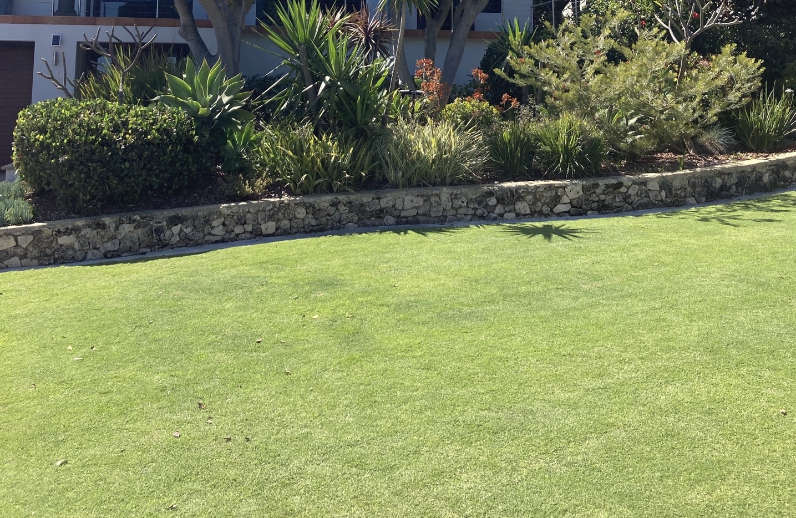
1. Plant wisely
Choose the right grass type for your garden’s aspect and soil type (turf farms provide great advice on this).
Once lawns are established, avoid cross-contamination. For example, if your footpath is Kikuyu but your back lawn is Couch, clean your mower between mowing each area, as some grasses are easily transported and can take over.
2. Water with care
This is crucial: water well so your lawn can thrive.
Choose the right time! Watering during the heat of the afternoon risks burnt grass. Watering at night can cause disease. Morning watering between 6am-9am in moderate temperatures gives the best results!
New lawns require frequent watering.
Most lawns can be watered 2-3 times a week in warm weather, once established. Drought-tolerant grasses need less water.
3. Take Your Time
Our first lawn mowing tip is simple: take your time!
Rushing mowing can lead to missed patches or over-mowing. Keep your mower at a medium setting. For tricky spots like corners or borders, go slow and steady.
This keeps your lawn looking well cared for, and reduces strain on your lawn mower.
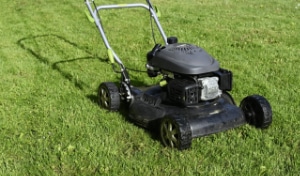
4. Maintain Your Lawn Mower
This simple step is often neglected. Service your lawn mower regularly (or have someone service it!) This reduces the chance of it breaking down unexpectedly.
A mowing schedule is important to keep your lawn looking its best. You can’t stick to a schedule if your mower is out of action!
To service your mower:
- clean the body (brush and soapy water) and small engine components (degreaser)
- clean air filters to remove dirt/buildup / replace when necessary
- check/replace oil in four-stroke lawn mowers — (check oil, refill if needed, replace annually)
- top-up fuel — check there’s enough for a full mow
- drain and replace fuel monthly
- check pull-cords, replacing frayed or stretched cords
- keep lawn-mower blades sharp.
Dull blades tear grass instead of cutting cleanly — ends can then become brown and unsightly. Blunt blades can also rip holes in the lawn!
So how do you know whether to sharpen blades or replace them? First, check for damage. Replace bent blades and any with nicks, or cracks – where blades are just dull, sharpen them.
5. Avoid Mowing a Wet Lawn!
If you’ve watered recently or it has rained, let the grass dry before you mow — mowing a wet lawn can damage the lawn and your mower!
Clumps of wet grass can clog mower blades, the grass can tear and go brown, and lawns can be exposed to disease.
6. Trim Your Edges
Trimming edges can give your lawn a polished, well-cared-for aesthetic.
First, create a straight line to guide you — use a plank, or twine and pegs.
Where edges are overgrown, use a half-moon edger to cut dense growth. Grass shears are perfect to reach tricky spots, then whipper-snip edges to create a precise border.
NOTE: always wear safety glasses, ear protection, long trousers and enclosed shoes when using a whipper-snipper.
Check which way the wind is blowing, and cut in the opposite direction to avoid blowback.
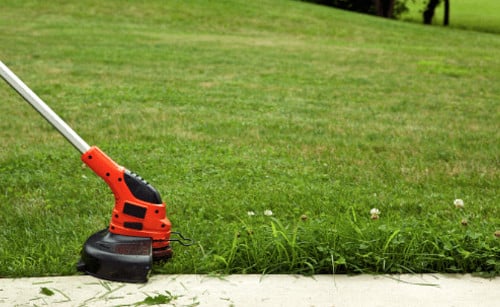
7. Adjust the Cutting Height on Your Mower
Always adjust the cutting height to suit your grass type and weather before you mow.
If you need to change this, turn off the mower by unplugging (electric mowers) or turning off the engine (petrol mowers).
Before adjusting height, allow the mower to cool down.
On many electric mowers, blade height is adjusted via a single lever. Petrol models often have a lever between each tire and the deck. For specific suggestions, check your instruction manual.
8. Consider Your Grass Type
Many people just cut their grass on the default setting whenever they have time and hope for the best!
To take your lawn care up a notch, work out the optimal timing and blade height, based on grass type and season.
There are four main lawn types in Western Australia — Buffalo, Zoysia, Kikuyu and Couch. The first three are the most popular. Each is cared for slightly differently — we offer our ideas on this, but recommended methods vary.
Buffalo grass: cut to 20-50mm in sun, 50-70mm in heavy shade. Mow weekly in warm weather, every 3 to 6 weeks in winter.
Zoysia: cut to 20-50mm in sun, 50-70mm in shade. Mow fortnightly in warm weather, every 3-8 weeks in winter.
Kikuyu: cut to 25-50 mm. Mow weekly in warm weather, every 3 to 6 weeks in winter.
Couch grass: cut to 10-25mm in sun, 15-35mm in shade. Mow twice a month in summer, monthly in winter.
9. Don’t Cut Lawns Too Short
Too-short grass goes brown and patchy. For a lush green lawn, don’t cut more than two-thirds of grass length at a time.
Cutting grass extra-short to save mowing so often may seem efficient, but the grass will become stressed, wilt, and be vulnerable to pests and weeds. Then it’s more work to repair the damage!
So how short is too short? In WA, don’t cut your lawn shorter than 20mm because of the heat and sandy soil.
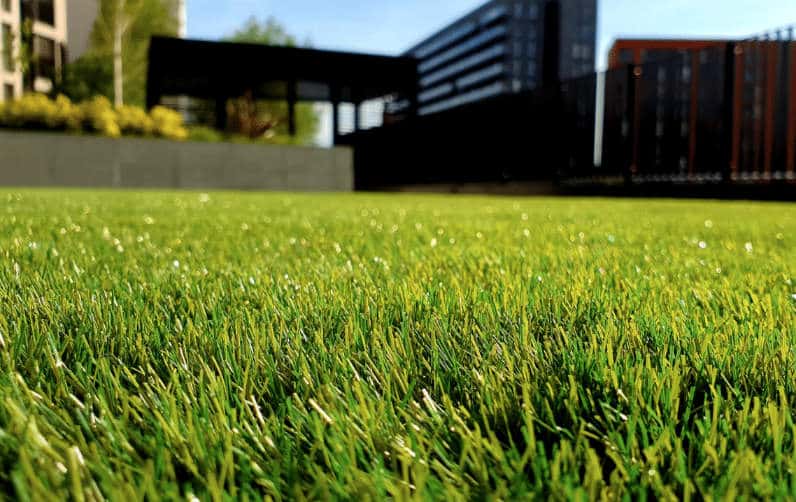
10. Double Cut an Overgrown Lawn
Grass left too long without mowing grows inconsistently, with some areas taller than others.
Tall lawns can go to seed, leaving them looking more like an overgrown garden of weeds!
Here, double-cutting is the answer — mow your lawn in two separate sessions to reduce length. This gives your lawn a chance to recover. Remember, never reduce grass height by more than one-third in one session.
11. Stay Safe
Don’t Mow In Full Sun
Mowing in the heat of the day is bad for you and the lawn! Mow at cool times of day to avoid your lawn becoming heat-stressed.
Take Care On Slopes
If your lawn slopes, be extremely careful.
Mowing upwards on a hill with a self-propelled mower can be dangerous. The mower blades are facing you – if you slip or fall the results could be disastrous.
Mow downhill, go slowly and don’t stop on the slope if you can avoid it.
Steep hills are tricky on a ride-on mower, particularly if mowing parallel to the hill. Mow perpendicular to the hill, moving downhill slowly.
NOTE: Never take risks on steep slopes. Check the angle of your hill using an inclinometer (available from gardening shops or as a phone app.) Any angle greater than 15° is too risky.
12. Don’t use chemicals right before mowing
Insecticides and chemicals can damage your lawn mower, your grass and the environment if used carelessly, or right before mowing.
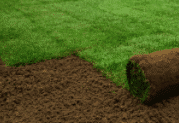
13. Don’t Cut Newly Sown Lawn
When you plant a new lawn, it is tempting to mow it as soon as it grows. Don’t! Your lawn needs time to grow strong roots and blades — this takes about 3-4 weeks.
Let your lawn grow a little higher than usual at first (usually 40-60mm). Mowing too soon causes ‘scalping’, leaving wheel tracks and torn patches.
Read our blog here for more information on how to take care of your new lawn and more top lawn care tips here.
14. Lawns for All Seasons
Just as we live differently from season to season, our lawns change too!
Summer Lawns
Warm-season grasses common in WA like Buffalo, Zoysia, Kikuyu and Couch like to be cut a little shorter in summer. However, to avoid scalping/patchiness, don’t remove more than one-third of the length.
Heat stresses grass, so give your lawn more TLC in summer. Fertilise and water well early.
Autumn Lawns
During autumn, reduce mowing frequency. Let lawn length increase slightly for more surface area to soak up sunlight. This strengthens grass in preparation for winter.
Fertilise around Easter — there’s still enough sun for fertiliser to give your lawn a boost, and sustain it during winter.
Winter Lawns
In winter, aerate your lawn so oxygen and water can reach the roots. Do this yourself with aeration boots or buy/hire an aeration machine.
For smaller lawns, aerate by digging a garden fork into the lawn every few centimetres and tilting it.
Spring Lawns
All grass types need fertiliser in spring to recover from Winter and prepare for Summer. The best fertilisers also suppress weeds.
We also recommend pesticides to tackle insects, and dethatching to remove excess dead grass-runners.
Note: This information focuses on warm-season grasses grown in Perth and most of WA. Cool-season grasses, usually only used in southernmost WA, are managed differently. Information on these is readily available online.
15. Get Creative with Cut-In Patterns
We all love a natural-looking lawn, but ‘lawn stripes’, diamonds, zigzags and other decorative patterns really make a lawn stand out!
Patterns are created by cutting and rolling lawns geometrically. Bends in the grass then reflect light at different angles.
Here are our lawn mowing tips to help you to create fantastic patterns.
- Grow your lawn taller.
- Use a guide like your driveway to cut in straight lines.
- Buy a striping kit to roll grass.
- Fertilise/re-seed for an even more striking effect
16. Grass Clippings as Mulch or Compost
Don’t throw grass clippings away! Clippings make great mulch or compost.
Lay clippings around 6mm deep as mulch, or combine with brown material for a fast, high-nitrogen compost.
When the lawn needs only a light trim, leave dry clippings on the lawn as a natural fertiliser.
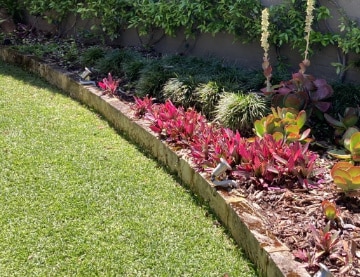
17. Lawn Edging
Lawn edging gives a finished look, stops grass from invading gardens, and can make your lawn the envy of neighbours…
Bricks are a popular edging. Other options include prefabricated concrete, plastic, metal or timber, or spade-cut edges.
Whatever your choice, edging will look tidier and separate lawns from garden beds.
18. Eco-Friendly Lawn Mowing
If eco-friendly gardening is important to you, a manual, battery-powered, solar or electric lawn mower can eliminate fumes. This healthy choice helps reduce pollution.
19. Help Damaged Grass Recover
Be generous with water, and try mowing in different directions each time you mow, to avoid wheel ruts.
Raise the mower-blade height a little to help the lawn recover from drought, disease or insect damage.
Topdressing is a great way to help patchy or uneven lawns recover, read here for more tips on topdressing your lawn.
20. Make Life Easier
If you don’t love pushing a lawn mower, there are other options.
Automatic self-propelled mowers are easy to use. Ride-on mowers allow you to sit while you mow.
Robot lawn mowers mow your lawn automatically (like a Roomba)! They handle slopes, are smartphone compatible, and mow when it suits you.

